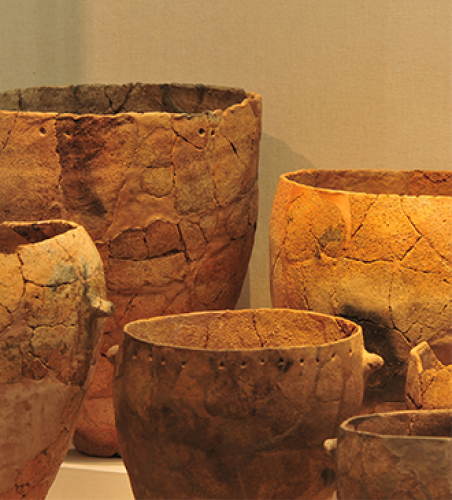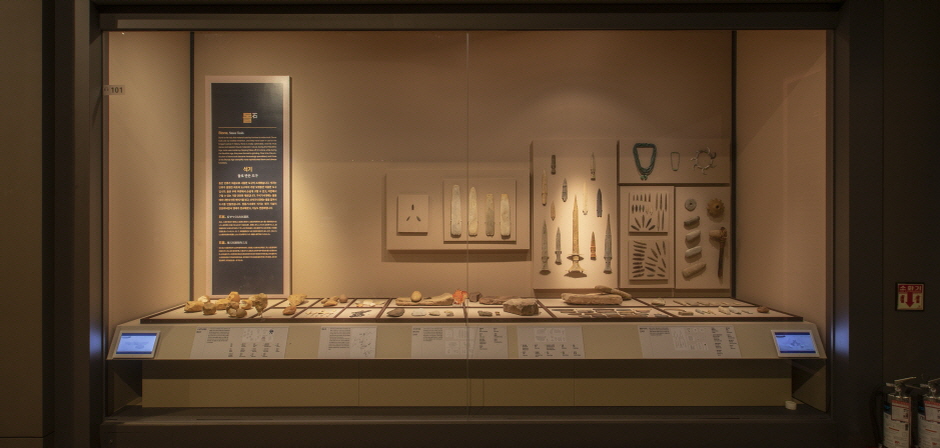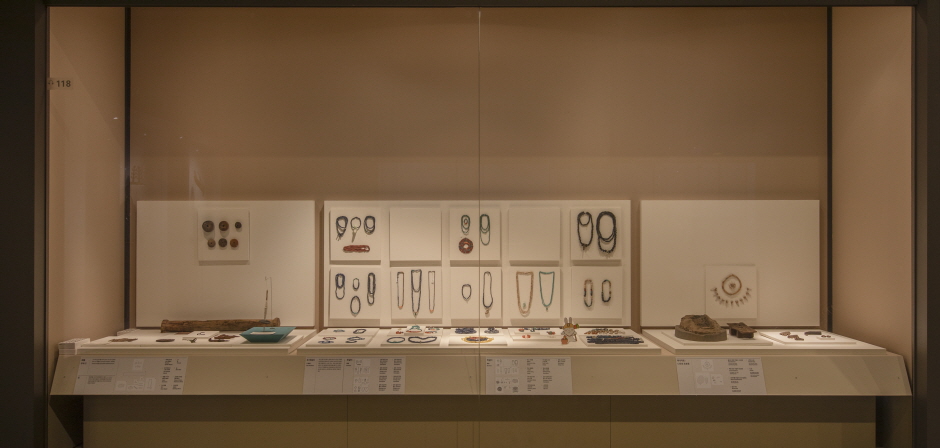In the section dedicated to the prehistoric culture of Daegu and Gyeongsangbuk-do, visitors can examine relics dating back to the late Paleolithic era, such as a hand axe excavated from Maae-ri in Andong and microliths discovered in Wolseong-dong, Daegu. Displays also include artifacts from the Bronze Age, such as burnished red pottery (hongdo; 홍도), polished stone daggers, and bronze daggers.
The next section focuses on the period when ancient kingdoms were established in the area of Daegu and Gyeongsangbuk-do, known as the Proto-Three Kingdoms period. The displays feature various items recovered from wooden-coffin tombs, Including the gray wajil pottery (Wajil pottery has a light gray color as it was baked in a closed kiln), metalware, jewelry, and accessories.
The third section features regional artifacts dating to the Three Kingdoms period, including gilded crowns, gold earrings, and pommeled swords found inside tombs in Bisan-dong, Daegu; Imdang-dong, Gyeongsan; and Tap-ri, Uiseong-gun. Displays also include pottery and gold earrings from the Gaya Confederacy.
Bronze Age
Duration
This section displays representative objects from the Paleolithic period, including burnished red pottery, stone farming tools, weapons, and bronze daggers. In particular, the daggers were important status symbols of the ruling class and crucial indicators of social change.
The Korean Bronze Age began sometime between the fifteenth and tenth century BCE and lasted until about the fourth century BCE. People of this period began to form settlements and villages, often on slopes near alluvial plains. They also cultivated rice and raised cattle.
To protect themselves from looting and attacks from outsiders, Bronze Age people dug deep trenches and erected fences around their villages. With the establishment of distinct settlements, class differentiation emerged, with the upper class largely responsible for the organization and defense of the village. Around the fifth century BCE, social rulers used bronze objects to symbolize their power and authority.
The representative burial types of the time were dolmens, which were often placed in the center of a wide sanctuary marked by stone slabs. It was also customary to erect tall stones at the entrances to villages and sanctuaries.
Featured Items
Plain coarse pottery

Korean-type Bronze Dagger

Tubular Jade·Green Jade





